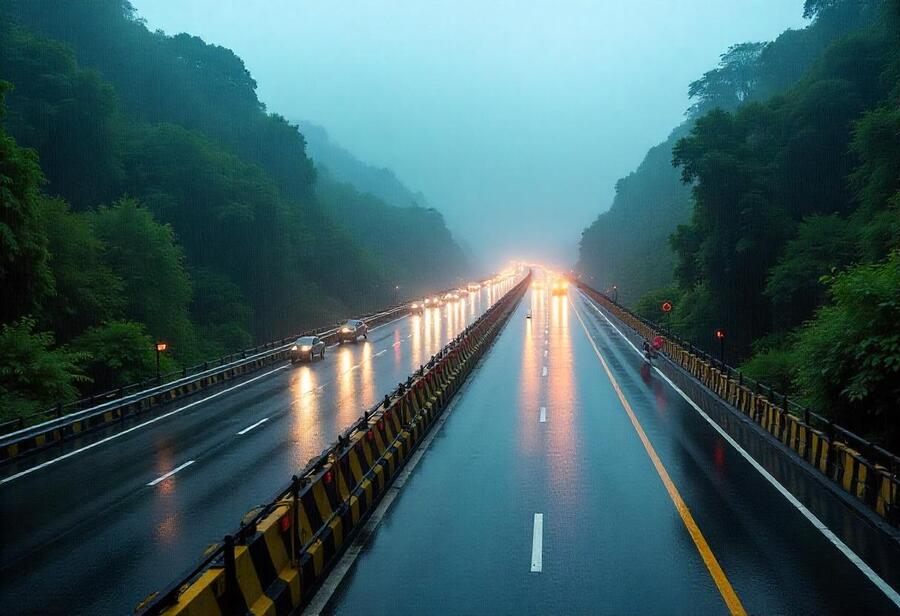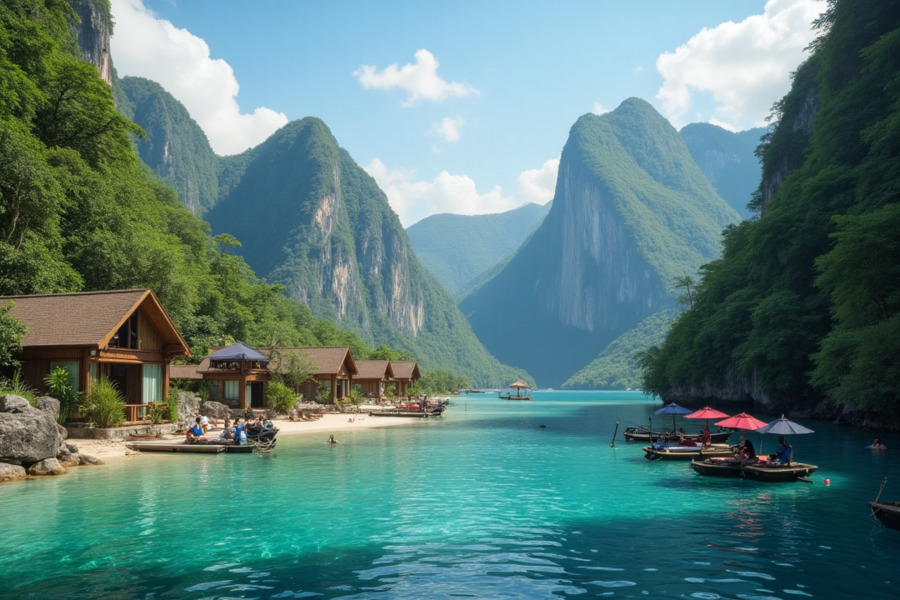≡-Delhi-Dehradun Expressway to Feature 26-Kilometre Elevated Road Directly Connecting to Mussoorie, Revolutionizing Travel and Boosting Tourism in the Himalayan Region : New Update You Need To Know – Viral of Today
<> Viral of Today <>
Home » India Travel News » Delhi-Dehradun Expressway to Feature 26-Kilometre Elevated Road Directly Connecting to Mussoorie, Revolutionizing Travel and Boosting Tourism in the Himalayan Region : New Update You Need To Know Sunday, June 1, 2025The National Highways Authority of India (NHAI) is progressing with an ambitious infrastructure project that aims to revolutionize travel to one of North India’s most beloved hill stations, Mussoorie. A new 26-kilometre elevated road is planned to directly connect the upcoming Delhi-Dehradun Expressway with Mussoorie, providing travelers a seamless, swift, and scenic journey into the Himalayas. This elevated link is poised to redefine accessibility to the hills, while balancing rapid development with ecological sensitivity and local economic upliftment.Current Challenges in Traveling to MussoorieMussoorie, often called the “Queen of Hills,” is a perennial favorite for weekenders and holidaymakers seeking respite from the plains’ heat and bustle. However, the journey to this hill station from Delhi is fraught with delays, particularly as tourists approach and pass through Dehradun. The narrow, winding roads and frequent traffic congestion slow down vehicles, often doubling travel time during peak seasons. This not only inconveniences visitors but also leads to increased fuel consumption and pollution in the sensitive Himalayan environment.Currently, tourists face a route that demands patience and careful driving, especially along stretches passing through urban Dehradun and the lower hills before ascending to Mussoorie. The growing number of vehicles, including private cars, taxis, and buses, exacerbates these challenges. The need for a more efficient and safe route has long been felt by residents, tourists, and local businesses alike.Elevated Road: A Game-Changing Infrastructure SolutionThe NHAI’s proposed 26-kilometre elevated road will provide a direct link from the expressway to Mussoorie, bypassing much of the congested Dehradun area. Elevated highways are known for their ability to cut through challenging terrain and urban zones with minimal disruption on the ground, offering faster travel speeds and improved safety.This elevated corridor will allow travelers to avoid bottlenecks and traffic snarls that commonly occur on ground-level roads, especially in Dehradun’s dense zones. The result is a smoother, shorter journey with reduced travel time and less stress for drivers and passengers. Early estimates suggest that this link will cut down the overall Delhi-to-Mussoorie travel time significantly, enabling more day-trippers and weekend tourists to consider Mussoorie as an accessible destination.Moreover, by facilitating a more direct and efficient route, the project will contribute to lowering vehicular emissions and fuel usage, aligning with India’s broader goals of sustainable transportation and environmental protection.Balancing Development with Himalayan EcologyThe Himalayan ecosystem is one of the world’s most fragile and ecologically sensitive regions. Any major construction project must tread carefully to preserve the natural environment, protect biodiversity, and avoid landslides or soil erosion that can be exacerbated by road building.Recognizing this, the project’s Detailed Project Report (DPR) includes comprehensive environmental assessments and proposes state-of-the-art engineering solutions designed to minimize the road’s ecological footprint. For instance, the elevated nature of the highway reduces land clearance on the ground, helping preserve forest cover and wildlife habitats beneath.Additionally, the NHAI is coordinating with environmental experts and local stakeholders to ensure that the project adheres to stringent environmental regulations. This includes conducting rigorous environmental impact assessments, obtaining necessary clearances, and involving community input to mitigate any adverse effects.The aim is to create a transport corridor that not only serves travelers efficiently but also respects the Himalayan landscape’s ecological balance — an essential factor for sustainable tourism and long-term regional development.Boosting Tourism and Economic OpportunitiesEnhanced connectivity is a powerful catalyst for economic growth, particularly in regions dependent on tourism. The new elevated road is expected to bring a surge of visitors to Mussoorie and surrounding hill areas by making travel easier, faster, and more comfortable.Local businesses, from hotels and guesthouses to restaurants, handicraft shops, and transport operators, will stand to benefit from increased tourist footfall. Employment opportunities are likely to rise in sectors such as hospitality, retail, and services, providing livelihoods for residents.Furthermore, improved road infrastructure encourages investment in complementary facilities such as resorts, wellness centers, and adventure tourism activities, helping diversify the local economy. By integrating the Mussoorie link with broader regional transport networks under the government’s Gati Shakti initiative, the project aims to promote holistic development that connects urban centers with tourism hubs efficiently.Integration with the Delhi-Dehradun Expressway and Gati Shakti InitiativeThe Delhi-Dehradun Expressway itself is a significant infrastructure milestone, cutting down the travel time between Delhi and Dehradun to approximately two and a half hours once operational. By linking this expressway directly to Mussoorie via the elevated road, Dehradun will become a critical transport hub for accessing not only Mussoorie but other destinations across the Garhwal hills.The elevated link project fits seamlessly into India’s ambitious Gati Shakti national infrastructure plan, which envisions creating integrated logistics, transportation, and tourism corridors to accelerate economic growth and regional connectivity. The plan prioritizes all-weather, high-speed transport infrastructure that reduces bottlenecks and supports sustainable development.By aligning the Mussoorie connection with Gati Shakti’s goals, the project benefits from coordinated planning, streamlined approvals, and enhanced funding mechanisms — expediting completion and maximizing long-term impact.Improving Safety and Travel ExperienceMountain roads can be challenging and risky due to sharp bends, narrow lanes, and unpredictable weather conditions. The elevated highway design promises enhanced safety features such as better road geometry, wider lanes, and improved visibility, reducing accident risks.Travelers will enjoy a more comfortable ride with fewer stops and less traffic interference, making the trip to Mussoorie not just quicker but also less stressful. The improved infrastructure may encourage a shift from crowded public transport to private or shared vehicles that benefit from the smoother route, helping manage overall traffic flows better.Future Prospects and Regional DevelopmentOnce completed, this elevated link will mark a new era of connectivity for the Himalayan foothills, encouraging sustainable tourism growth, economic prosperity, and social development in Uttarakhand. It will also serve as a model for similar infrastructure projects aimed at balancing development needs with ecological preservation in mountainous regions.The ease of access from Delhi and surrounding areas could spur a new wave of weekend tourism, adventure travel, and cultural exploration in the Garhwal region, bringing economic and social benefits to communities along the route.ConclusionThe NHAI’s plan to build a 26-kilometre elevated road connecting the Delhi-Dehradun Expressway to Mussoorie stands as a transformative project with far-reaching implications. It promises to reshape travel dynamics by offering a faster, safer, and more environmentally conscious route to one of North India’s top hill destinations. With meticulous planning and sustainable practices, this project will not only enhance tourism but also empower local economies and preserve the pristine Himalayan environment for generations to come.
This information will surprise you!
See also
- Read until the end to discover everything.
- Important information you need to know.
- Interesting facts and helpful tips.
Conclusion
Did you enjoy the news? Keep following us daily!













